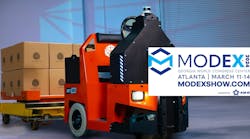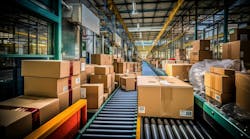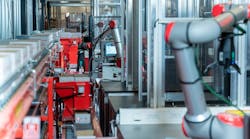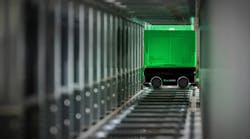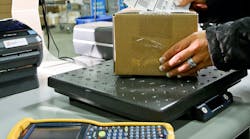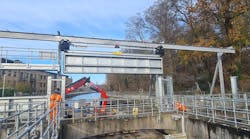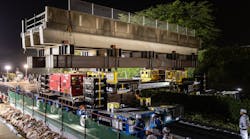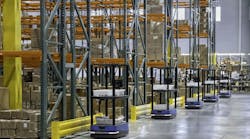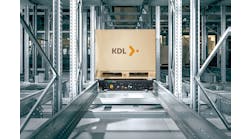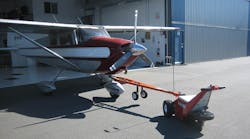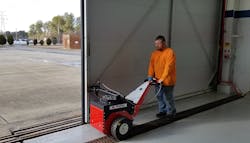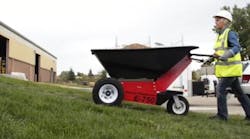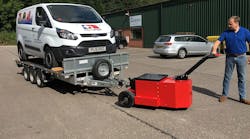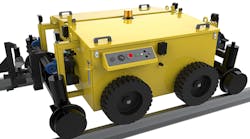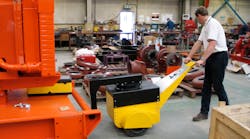The aviation industry needs technicians. A shortage of skilled mechanics has become so critical that Congress is considering a bill to attract, train, and retrain technicians in the aviation industry.
Demand for aviation maintenance technicians will outstrip supply by 2022, according to global management consulting firm Oliver Wyman.
Maintenance, repair, and overhaul (MRO) organizations face increasing maintenance costs and turnaround times due to the labor shortage and failure to upgrade their IT systems, according to the report.
MRO organizations can take some proactive steps to ease labor constraints as they await approval on the talent-development bill. This includes the use of more efficient material-handling equipment.
“Many materials that weigh more than 800 pounds can require more than one person to move,” says Ryan Blesi, vice president of material handling, Power Pusher division, Nu-Star Inc.
“On average, it can take 23 minutes to get back on task after leaving what you are doing. This means you may need two, three or even four or more people to stop what they are doing to help move something. That time can add up very quickly.”
Nu-Star, a manufacturer of battery-powered material handling solutions, offers a series of ground-support equipment for transporting aircraft and airline equipment, parts, and machinery.
The equipment moves materials that are on wheeled or semi-wheeled units, including carts, trailers, airplanes, and roll cages. In an aircraft MRO environment, typical applications include movement of the aircraft, engines, parts, work platforms, toolboxes, and hangar doors.
The Forklift-Free Factor
Many MRO facilities employ forklifts or aircraft tugs to move heavy equipment, such as aircraft engines. But forklifts and tugs may not be ideal in an aircraft maintenance environment. Battery-powered ground-support equipment may have cost, environmental, safety, and efficiency advantages over forklifts and tugs, Blesi says.
Forklifts typically require a certified driver to operate the vehicle and take up more space than a piece of battery-powered, trailer-moving equipment or pushers and cost about $30,000 more, according to Blesi. Equipment that requires a significant investment or additional certifications places more stress on a short-staffed industry.
In addition, hangars are already congested areas. A large piece of equipment, such as a forklift, can make it difficult to work efficiently, Blesi says.
“We are typically smaller than alternatives like forklifts or aircraft tugs,” Blesi explains.
“Also, maintenance hangers can be tight once you have planes in there and all the mechanics working on them. There are work platforms, scissor lifts and other items that make it a congested area.”
For example, Power Pusher’s Trailer Mover can move trailers in tight locations where larger equipment, such as forklifts, are not practical. A single Trailer Mover operator can transport 7,500 pounds on level grade, 5,000 pounds on 5% grade. It’s also configurable with various types of trailer attachments.
For instance, pintle hitches are common in aircraft applications. Nu-Star has developed custom Trailer Movers that attach to pintle hitches, Blesi says.
Other Features to Consider
Other options for heavier loads include the Automotive Power Pusher, which allows a single person to move loads of 500 to 20,000 pounds, and the Heavy Duty Trailer Mover, which is capable of transporting 25,000 pounds on a level grade.
In addition to trailer movers and pushers, Nu-Star sells equipment that opens and closes the hangar doors. This capability may also reduce downtime and increase productivity because some hangar doors need to be opened manually.
Also, if a powered hangar door breaks down, repairs can be time-consuming and costly. The opener can serve as a back-up to ensure workers can move planes in and out of hangars without delays, Blesi says.
Another factor to consider in MRO facilities is emissions. Forklifts and other material-handling vehicles are often gas or diesel powered. Battery-powered equipment provides a cleaner work environment for technicians because workers are not exposed to emissions, Blesi says.
“In cold weather emissions from traditional internal combustion engines can present an increased hazard because in many cases doors and windows will be closed,” Blesi says.
“The result of this is a greater accumulation effect of noxious gas emissions in the facility. Solutions to this problem might include installing costly ventilation systems. In a large space like an MRO hanger, this can be a very large investment and take a long time to install. Battery-powered equipment not only can be implemented quickly but can also be a cost-effective solution.”
